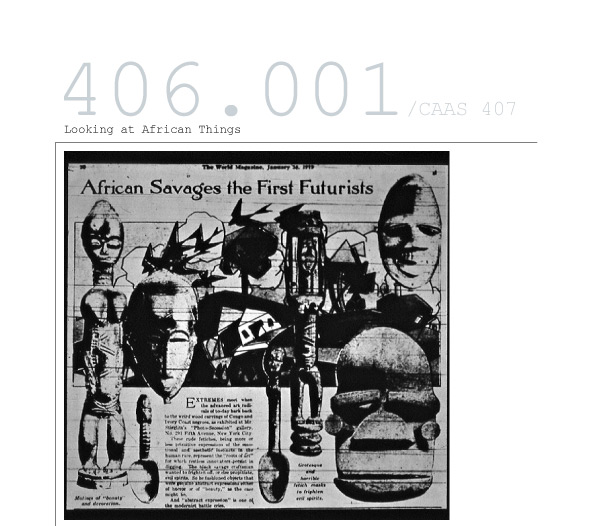
In southeastern Nigeria, an Igbo proverb tells us, "You can't view a performance standing in one place." In the West, however, our understanding of African visual culture has long been centered on the practice of exhibiting African objects out of their vital contexts-rendering them motionless, making them available to our consuming vision, mapping out onto them our own systems of value. Such a practice has unfolded especially in museums dedicated to the exhibition of objects categorized as "African Art." But it is not these objects alone that are made to represent "Africa" so problematically; in world's fairs, theme parks and other cultural expositions, living Africans too are transformed into things, into images of themselves. In this course, we will examine the history of how African objects have become "African Art": What are the terms by which African people describe the visual objects they create and use? What are the "exotic" terms that allow us to consider those objects within the canons of Art History? What is excluded from those canons, and why? And how are such strange and even violent transformations a metaphor for how African people have been transformed into objects? Estimated cost for materials: $50 or more, but less than $100. II. V. 4.
Instructor: David Doris
email:dtdoris@umich.edu
email:dtdoris@umich.edu
- Tuesday *Crosslisted with CAAS 407.001
- 1:00pm - 4:00pm
- G-026 Tisch
- Credits: 3
- Seminar